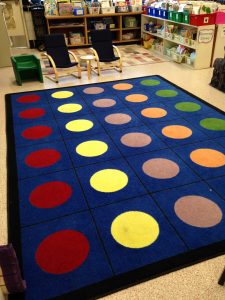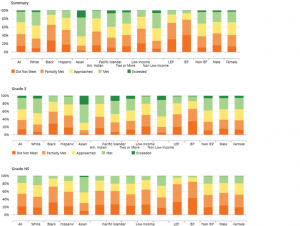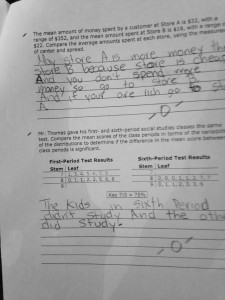-
December, 2016— Greetings from the Starbase! Last year, readers seemed to enjoy snippets from the annual holiday letter so… ummm …
Jocelyn and Luke Skywalker feel fortunate that the country, while divided in half, appears to have split into a bicoastal vs. central configuration that should preclude civil war. Last year’s concern with werewolves and vampires has been supplanted by political fascination. Who are we? Where are we going? We seem to have climbed on the scariest roller coaster in the theme park. Let’s hope that all the rails and nails on the Trump Ride will hold as we hurtle down toward a planet without global warming and with a warm, fuzzy view of Vladimir Putin.
In the interest of harmony, Ms. Q and Luke thought about ducking politics in this letter. Nah. Let’s go for it. Are the emails true? That question should hit the radar more often. What does it mean if Russia can read all our thoughts? Or most of our thoughts? Perhaps the valuable lesson of 2016 has been that our cybersecurity completely sucks. We needed to know that.
The regular death of Mark Zuckerberg and other apparent zombies – Zuckerberg sightings are everywhere – should be noted. Why were the pollsters so wrong? Possibly in part because few people believe what they hear and see on the news today. Zuckerberg keeps dying. Last week,Ms. Q and her squire watched a number of funny episodes of the Dick Van Dyke show on a major network after Mary Tyler Moore was reported dead. Apparently, Mary Tyler Moore is refusing to accept her demise, however. At this rate, America may become a land of zombies before we even acknowledge the outbreak. What good is news no one believes?
On the cheerier side, Mary Tyler Moore is not dead. Zuckerberg may not be either. His corpse seems remarkably animated. Chocolate production has been steaming ahead, while variations on the pumpkin theme invade food and drink everywhere. Jocelyn and Luke recommend Rogue One, Dr. Strange and Captain America: Civil War, among others. Fantasy: One antidote for reality and cheaper than drugs.
Having a rough day? Just say to yourself, “I am one with the Force and the Force is one with me.” While not foolproof, this formula should distract you. Next, say to yourself, “Man, I must be cracking up. Well, it doesn’t matter. Who cares anyway?” then repeat again, “I am one with the Force and the Force is one with me.” Etc. Repeat this litany until your problems have passed by or become so acute that the solution seems obvious. Remember that a Jedi Knight can run away and hide; if that path was good enough for Luke Skywalker and Obi-Wan Kenobi then it’s good enough for you too.
Sincerest belated wishes for a Merry Christmas and/or Happy Hanukah or whatever holiday readers celebrate from Ms. Q to everyone on Earth or in Cyberspace. Peace to everyone on Earth and Earth’s outer colonies and to all alien life forms reading this letter. May the joys of this season brighten your days and may you enjoy a Blessed New Year.
P. S. Apart from the strange portents for 2017, 2016 was noteworthy in another respect: The loss of Carrie Fisher and her mom reminds us to cherish the time we are given. In this and any other multiverse, tomorrow remains undiscovered country.
Monthly Archives: December 2016
Surrealism in Action
My last teaching year felt absolutely surreal. If a government expert decided all our third graders needed to learn nuclear physics, would we simply fall in line? Would we spend hours teaching our eight-year-olds the fine details of binding energy, the Liquid Drop Model, nuclear dimensions, saturation of nuclear forces, Fermi gas, and shell models?
I am becoming afraid that we might. Districts might start paying consultants to give seminars on fusion and whatnot, obliging teachers to attend endless meetings and professional developments designed to make saturation of nuclear forces accessible to elementary students. Lost teachers would spend their free hours discussing the lunch provided and how that lunch compared to previous lunches. Were the vegetarian options plentiful enough? Did pretzel rolls work with tuna?
Giving this student this test was pure madness:
I knew it. I tried to tell people. They got mad at me for my lack of faith in my students. No, let’s be more accurate: At more than one point, they BLASTED me and threatened to fire me. I spent a full fall week-end trying not to shake and then put a resignation letter in my glove box that I never executed. I drove around with it for months.
But my students needed me. I thought. I think. (I will never be quite sure.) Given that someone was checking in on me, walking into my room at regular intervals to make sure I was following the plan prepared by the now-bankrupt East Coast consulting firm that was determining every math lesson I taught, and given that I didn’t have the stamina to take much more verbal abuse for trying to remediate my students and teach them the elementary math they had somehow missed, I am not sure how much resigning would have affected my students. They would have found someone else to teach those incomprehensible math lessons, someone who might not have cared nearly as much about my students as I did. I worked furiously to keep morale up and to help them continue to believe in themselves even as I academically slaughtered them, day by day.
We had a rough fall, but my the end of that fall, they all understood that every class in the school was receiving that same curriculum, whether bilingual, special ed, or so-called “regular” in character. Other classes were also spending more than 20% of their time testing or quizzing. No classes were having field trips. No classes were getting special breaks except for an occasional 10 minutes free time at the end of the week with snacks, a reward for exceptional attendance. We won those ten minutes more than most. They understood I was as trapped as they were, and I seemed to be getting into trouble enough so that they felt sorry for me. They knew I was fighting to make the year work for them.
I never lacked faith in my students. Had I been allowed to teach them the language and math they were missing, I am certain they would have made progress. I am certain they could have learned a great deal — had they been taught the missing mathematical steps that government and administrative intervention left no time to pursue.
I retired in grief. Finally, I have moved on to anger. I handed all those completed or semi-completed, stupid yellow and white tests to academic coaches who spirited them upstairs into piles. Administration presumably looked at those tests. If they didn’t, they ought to be fired.* Coaches looked at those tests. They saw that my students never passed these seventh grade Common Core tests, unsurprisingly since documentation showed their AVERAGE mathematical operating level placed them in the third grade. These coaches were easily bright enough to understand that I was right when I kept telling them I needed time for remediation and I needed to differentiate instruction. I was given permission to remediate for 20 minutes of my block — though I always got in trouble if the Assistant Principal caught me doing this – and to differentiate PROVIDED that I also did everything that all the regular classes were doing. If I’d been Hermione Granger with a Time-Turner to rotate, shifting time, I might have had a chance, but with everyone already so far behind, I had no time. I could not keep up, much less get ahead so that I could go back somehow.
Oh, my God, was this STUPID. To the Department of Education: I am OK with President Trump firing all of you. I do like the NAEP tests, but… In the big picture, I think we need to return control of the classroom to the classroom teacher.
P.S. Upon reflection, maybe I don’t want all those people fired. But all those representatives of the state of Illinois who actually walked into my classroom during the last year? They never helped me one bit. I resent giving my tax dollars to a system that functions so badly, if it functions at all.
*The Principal and Assistant Principal have since left the district, actually, like they all do after they fail to deliver results. In fairness, through relentless benchmark testing, the Principal did deliver some improving numbers. I think she left, rather than being pushed. She was also far kinder and more supportive by year’s end. I think she had figured it out, not that her improved attitude did my students much good by then.
Reaching Out to Aloof Student
New users’ email addresses pop up in my mail, mysterious cyberdenizens from distant lands or possibly next door. Sometimes I know a general region. I have a surprising number of Polish users, for example. But a name caught my attention yesterday.
Greetings to aloofstudent_etc.@etc. out there. Your name made me laugh. Still, I would like to comment. If you are referring to your social state, that’s fine. I support introverts. I am overdue for another stand against all this touchy-feely group work that I think discriminates against introverts. But if you are feeling aloof about the content being thrown your way, I’d like to make a few suggestions.
- Ask questions. A good “why” can wake up a teacher, shutting down robo-recitations. Why did the Cherokee accept those lies? Where did that three in the denominator come from? What are mitochondria good for? School will go by faster if you don’t get too zen about the whole mysterious information experience.
- Read the book. If the book bores you too badly, scan the book for topics and go looking for your own information. You’ll probably do better on the test if you hug the book, but if you understand the American Revolution when you are supposed to understand the American Revolution, you will do alright. It’s better to stay interested and sacrifice a few points then plow through a book you loathe.
- Hopelessly bored? Consider getting a parent involved. The gifted especially suffer under our all-inclusive classroom placements. Sometimes moms and dads can help convince teachers to create enrichment activities. If you understand everything the teacher says, you are in the wrong class, but you may also be in the only class that works with your schedule. If you can’t get out, at least try to find a way to do independent work in the library.
- It will improve your odds of slipping off the curricular leash if you create the framework for the independent work you wish to do. Rather than making the teacher create a new, special, individualized plan, try going to the teacher and suggesting your own plan. “I’d like to create a slideshow showing the history of the Apache during the period we are studying. Could I substitute that for blah blah blah? I could show you a rubric for it tomorrow.”
- Read. Try to find a genre you enjoy. Find your passion. Pursue your passion. Pursue more than one passion. Try interests on for size. Paint a little. Sculpt a little. Write a science fiction short story. Sew a quilt if you have the patience. Read a book on genetics.
- As the curricular noose tightens and the Common Core chips away at educational independence, you may find classes where you simply never make a connection. Don’t give up. Next year may be better. Just do your job. Answer questions 1 – 10 and make the best of it. Being bored is part of life. Training yourself to produce even when bored will have many long-term rewards.
- Try to work a few jokes into your work product if your teacher appreciates jokes. If you don’t know what the plant will do when put in the closet in the dark, you can always guess, but when you really have no idea, “Contact his home planet to arrange a rescue mission,” is a perfectly good answer. Well, no, it’s not. But it’s better than blank space. Heck, ask Siri or Cortana unless you are taking a test. Put the question into a search engine. Did Thor give up when he couldn’t lift his hammer? Did Ironman give up when he found himself inside the Afghan cave with Yinsen? No! Of course not. Persevere,
- Not sure if you want to do the homework? Ask yourself what Captain America would do. Don’t ask yourself what Ironman would do since he’d almost undoubtedly blow off the assignment — but you don’t have billions of dollars like Tony Stark. Until you do, it’s best to try to prepare to have the option to go to a good college.
Aloof is fine sometimes. Aloof can protect you from hours of inane conversation, trapped in the middle seat of an airplane row. But aloof never works as an approach to education. We all do our best work when we work with passion. Passion and aloofness are antonyms, matter and anti-matter. We all know what happens when matter meets antimatter. Ka-boom! KA-BOOM! Another education wasted. Another universe destroyed.
Eduhonesty: Tired tonight and this post seems a bit wacky. But I’ll stand on it. We can all do worse than to ask ourselves what Captain America would do.
As the Battle of Shiloh Fades into the Mists
 2014 unit test.
2014 unit test.
Returning to a time when I taught bilingual Language Arts and Social Studies:
During the 2011 to 2012 school year, I did what I was supposed to do. I worked in teams. I adapted the lesson plans of other teachers and taught what they taught when they taught it. I explained the difference between legend and myth when other teachers explained the difference between legend and myth. I presented the Battle of Shiloh when they presented the Battle of Shiloh. Of course, the bilingual students were always barely keeping up with the “regular students” at best. I was sometimes rewriting whole chapters of the social studies book.
All my required textbooks were difficult or even impossible for my students to read, including parts of the Pearson English-language learner version of the language arts textbook. My students were not much interested in the Pearson books’ stories [1], but that fact was not my greatest problem, although lack of student interest complicated my daily teaching life. Some of my bilingual students had told me they did not intend to finish high school. I would have liked to be allowed to prepare lessons to inspire those kids to stay in school, even when those lessons did not match everyone else’s plan, using my own book and story choices.
My students and I had a much larger problem than in-sync lessons and interest in school, however, captured in a distressing moment during one of the almost daily afterschool staff meetings. We were grouped together to discuss the “cusp” plan in which we identified students who were nearly able to make targets on the annual state test, focusing our tutoring efforts on those students in an effort to bring up the school’s overall scores. For example, a MAP® score of 213 in language arts might indicate a student was probably only slightly below the level needed to pass the annual test, the Illinois State Achievement Test (ISAT) at that time. We were to give cusp students more-intensive, small-group instruction during tutoring, hoping to get them across the passing line for No Child Left Behind purposes. The cusp plan had solid potential to pull scores up, saving our school and district from government sanctions.
Unfortunately, my tutoring period was the only time I had to work on targeted English instruction tailored to my students. All the rest of my classes were taken up doing required versions of other people’s lesson plans. I asked the Principal if I could send the four to eight students in my cusp group to another teacher for their small-group work. A fellow language arts teacher — Thanks, Nicole, across the years — said she would take my students.
The Principal looked upset.
“That’s what (the 8th grade ELL teacher) said too!” he replied angrily. “I don’t think I like it.”
I have profound respect for that Principal. He’s a great administrator, the best I’ve ever known. But by that time, he’d been up against the wall for years. Those scores had to come up or else. We were getting closer to hitting the ugliest of ugly NCLB sanctions by then – the takeover of our school by the state. But the kids in my bilingual classes had entered middle school full academic years behind grade level, and attempts to pull scores up were being seriously complicated by state and Regional Office of Education involvement, the involvement that led us all to teach the same stories from the same books that my students did not like.
I looked at my irate, frowning Principal and tried to clarify the issue.
“When are they going to learn English?” I asked plaintively.
I kept asking for time for English. He kept signing off on this but tutoring kept filling up with required behavioral modification strategies to work on, assemblies to attend, schoolwide test preparation sessions using a common book, as well as regular practice and benchmark tests of one kind or another that preempted tutoring activities. The teacher next door, imported from Spain, was also doing a remarkable job of small-group work in mathematics. I kept clearing his path, making sure he could use tutoring for mathematics, often at the expense of English, since there was only one 40 minute tutoring period daily, and those small math groups could not use it for English. If students emerged from the year understanding the mathematical order of operations and how to manipulate fractions and decimals – well, that had the potential to be a real win, even at the cost of the little time I had available for English-language instruction. (Some students made formidable mathematical progress that year thanks to Francisco, who regrettably returned to Spain. A couple of years later, a few were in regular honors math classes at the high school.)
Students were either in math or English during tutoring, also called Response to Intervention, or RtI. With selected students doing math or English in small groups, that left a large group to do English independently. The small math and English cusp groups varied regularly, making it difficult to continue in a linear fashion on any topic. Some students on the cusp in English had also scored on the cusp in mathematics. Francisco was taking students based on their need to learn parts of the math curriculum, so his groups might change from day to day. Some students started with me on a topic, but then missed the end.
My bilingual students needed a great deal of pure English instruction if they were ever going to pass the annual bilingual exit test, but under that year’s regime, I was mostly forced to put them into groups to work by themselves on flash cards and vocabulary. They could do vocabulary independently. That freed me to work with the students in my English cusp group. I cheated and stuck a couple of students in the cusp group whose scores did not quite meet the numerical cut-off. Even with those extra students, I was focusing on 4 to 8 students (numbers varied depending on how many kids Francisco had taken) who might make annual state test targets, a rather unlikely prospect for even this small group given that these students had never been able to pass the ACCESS English-language learning test.
My life was complicated by books and materials purchased by the District Bilingual Coordinator. She expected me to take advantage of these extra materials. I managed to use my off-script books for independent reading for non-cusp tutorees, but there was no time to take advantage of these books and supplies otherwise. The school’s administration required my classes to use recently-purchased Pearson materials instead. We were perpetually behind throughout the year, fighting language deficits that needed to be addressed while keeping up with all the other teachers in the school.
I used the SIOPTM lesson plan model[2] to work language learning into my content-based lesson plans. In theory, this lesson plan model helps ensure both curriculum content and English are taught to English language learners. It’s sound practice in the right circumstances, but we were being overwhelmed with unfamiliar content as we tried to march in step with the “regular” classes. In social studies, I was explaining the American Revolution to students who were not from this country, and who did not know if America had started with a bang or a whimper. Unlike regular students, some of my students had almost no background knowledge of American history. History can be a tough sell no matter where a kid was born. At least the revolution and the civil war had fighting. I kept a number of the boys listening by discussing general military tactics and applying these to specific battles.
Why all the above details? I picked up a favorite saying during professional development: “There is no teaching without learning.” During this year, I experienced its corollary. I feel silly even writing this, but what I learned is that “there is also no learning without teaching.”
I had no time to teach English and, as a result, the ACCESS scores came in showing virtually no progress in English, with a motivated exception or two. The students who actively asked for help filled in gaps. The others went nowhere. I wish I were more astonished. I wish I did not feel that I had wasted so much of that year. The truth is that in a few years, these students won’t care about the difference between myths and legends and a number won’t remember who won the battle of Shiloh.
I taught content and vocabulary related to that content. I taught the curriculum. But the curriculum was not what these students needed. They needed basic English. They needed to work on irregular past-tense verbs. Some of them needed to work on regular past-tense verbs. (Quote from a favorite seventh grader: “Ms. T! The boys dooed something bad!”) They needed to learn English-language word order. They needed a great deal more basic instruction in the primary language of this nation than they received, due to pre-established administrative plans designed to pull up test scores that stole away almost all the hours and days of our time.
Eduhonesty: Strike two against the Core and bilingual education as currently practiced. While the Common Core was not impacting my classroom during 2011 to 2012, the homogenization of education resulting from the Core has only worsened teachers’ situations. During 2014, the year before I retired, I was required to use tests and quizzes based entirely on Common Core expectations. I could prepare almost none of my own materials; outside consultants chose materials and unit tests for me, few of which my students could read.
Not a single student of mine passed a single East-Coast prepared unit test all that last year. I showed pictures of the tests to a community college professor this week, who understood immediately:
“They could not read the tests,” he said.
No, they could not. But absolutely no one listened to me anywhere up the line while I tried to point out this rather important aspect of my testing situation. “No excuses!” My assistant principal kept repeating. Not being able to read the test was no excuse. I am not sure being dead would have been an excuse.
[1] That ELL book from Pearson did have stories that my students might have enjoyed but other teachers were picking my daily reading choices. The story about the scared, young African-American boy in the stairwell may have captured the imagination of many students in my school. My students struggled to relate to the setting, characters and plot, however, none of which resembled their own lives. At that time, the school was about one-half African-American and one-half Hispanic, an atrocious set-up for one-story-fits-all, especially if a school is trying to make those stories contemporary and “relevant” to students’ everyday lives.
[2] The Sheltered Instruction Observation Protocol (SIOPTM) Model is an instructional model used to create lesson plans that meet the academic needs of English learners. The model can be used to build robust, language-centered lessons in any content area. I will recommend SIOPTM to teachers in all subject areas.
Educational Malpractice in Action
All that is valuable in human society depends upon the opportunity for development accorded the individual. Albert Einstein
One size never fits all, but somehow our government’s educational leaders keep trying to find the magic size anyway. They can’t succeed. They won’t succeed. In the meantime, teachers and students pay the price for misguided attempts at Common Core Standards and other wishful thinking.
I’d like to take readers back in time. The school year ending in 2012 had been a long year. I had taught 7th grade language arts and social studies to a group of bilingual students, some of whom had started in the bilingual program in kindergarten and had never managed to pass the exit test. The length of time students were spending in “transitional” bilingual programs had become worrisome and even appalling in my view. If some students never exit, a program should not be labeled transitional. I caught flak from bilingual and other administrators for recommending that students’ parents pull them out of bilingual classes, whether they qualified to exit or not.
The native-language crutch has become one too-often-ignored problem in bilingual education. If all the students in a bilingual class speak Spanish, too often those students will be speaking Spanish to each other in school. They may wake up in a Spanish-speaking household, climb on the bus with Spanish speaking friends, go to Spanish-speaking classes, and then return home for an evening of Spanish-speaking TV with a possible trip to a Spanish-speaking restaurant. That’s the poorest recipe for English-language learning I can imagine. The best way to learn a foreign language is immersion. I regard the plan where we immerse these kids in Spanish to teach them English as one of the damnedest misuses of educational funds I‘ve ever seen.
In my classes, we used English, with some Spanish support for newcomers and a few others. But the shortage of bilingual teachers in Illinois has led to the creation of provisional certification. I took that provisional certification test to become a bilingual teacher. The test is essentially a language test. Illinois provides a 5-year temporary bilingual certification to teachers based on proof that those teachers can speak another language, usually Spanish. Having sat in multiple professional development meetings for bilingual educators, I’d like to share a scary observation: Some of those provisional teachers do not speak English well. At times, I have listened to bilingual teachers who appeared nearly incoherent as they tackled the English-language barrier. A former Assistant Principal and I once discussed this problem. He described how his fourth grade bilingual teacher used to bring a student with her to translate when she met with him.
I’ve raised a boatload of issues here, but I’d like to make just one point for the moment. The Common Core represents an absurd use of time for America’s bilingual students. The PARCC test based on the Common Core failed most of the English-speaking students in many American zip codes.
From Diane Ravitch, at http://www.cnn.com/2013/11/25/opinion/ravitch-common-core-standards/index.html, writing about New York (Updated 7:52 AM ET, November 25, 2013):
The parents weren’t angry because they found out their child wasn’t brilliant, but because most were told by the state that their children were failures. Only 31% of the state’s students in grades third through eighth passed or exceeded the new tests. Among students who are English-language learners, only 3% passed the English standards; among students with disabilities, only 5% passed them; among black and Hispanic students, fewer than 20% passed. The numbers for math were better, but not by much.
In what universe does a multi-day test that sucks up so much time to administer and process benefit those English-language learners? They are guessing their way through the whole damn test for the most part. That’s what that “3%” means.
Strike one against the Core and bilingual education as currently practiced.
Eduhonesty: To Be Continued…
Deeper Down the Rabbit Hole
We have no reason to believe that making standards tougher will improve test scores, much less improve student learning. Common sense would suggest the opposite might occur. As bars go up, students may miss the target by a greater margin — if standards themselves have not caused our academic deficiencies.
The idea behind more demanding standards seems to be that if we raise the bar, students will leap higher as teachers work harder. Where is the proof that this can or will occur? What is the rationale underlying this belief? As the bar rises higher and higher, human nature suggests that at least some students will simply toss up their hands. Harder material will only discourage students who have already fallen behind.
As I write this, I am struck by another irony. The possibly nonexistent “crisis of standards” that resulted in the Common Core may be in the process of creating the very crisis that the Core was allegedly intended to fix, at least in America’s more disadvantaged districts. A sudden shift in standards leaves lower-scoring students technically farther behind than they were before, a fact well documented by recent Smarter Balanced and especially PARCC scores, scores that proved an epic fail across all the states that ventured to try the new tests. Many more students failed the PARCC test than had failed their state tests the year before.
Harder tests create higher failure rates. No evidence yet exists to suggest that these tests necessarily will boost learning. The mere fact of a harder test does nothing without remedial education and increased student support. Only additional time and support will improve learning – and these tests are stealing away time that might be used to provide that support.
How many teachers are sitting in Common Core, test-related meetings and professional development seminars this year when they might be tutoring students instead? We can’t know the answer, but I would venture to guess the number is somewhere in the millions. The educational cost will necessarily be high.
Eduhonesty: I do appreciate the many half-day subbing opportunities provided by these meetings. I try to fulfill the lesson plans left behind. Do all the other subs filling in during these meetings follow the plans? How many cannot? I am endorsed for the whole core curriculum but that makes me a pretty exotic beast. Especially in disadvantaged and urban districts, sometimes no sub can be found to cover for teachers. Then students are added to another teacher’s classes or some teacher gives up a planning period to sub. In the latter case, maybe papers don’t get graded. Or maybe sub plans become abbreviated. A history teacher can’t always teach a chemistry lesson. Ideally, sub plans should be bullet-proof, reinforcement activities that can be done without the history teacher knowing how to bond atoms. Unfortunately, those plans can and do go wrong. Students may act up when a sub takes the helm as well. Subbing overall results in substandard learning opportunities.
Sigh.
For a Few Dollars More, Life Could Be So Much Easier!
As I explore the differences between districts that have and have not, I’d like to point out an elementary school rug from the land of plenty. 
Now a rug from the land of around 90% free and reduced lunches:
 This is not the actual rug. The actual rug does not look this clean. If I get back to that classroom, I’ll take a picture of that tatty, plain, gray rug.
This is not the actual rug. The actual rug does not look this clean. If I get back to that classroom, I’ll take a picture of that tatty, plain, gray rug.
I don’t know why I did not think to snap a picture of that rug, because as soon as I saw it I went straight to the problem: How do the kids know where to sit? People who have never taught will probably think that we can simply assign them places. But even with neat little circles and squares, kindergarteners, first graders, and even older elementary school children struggle with seating order and their places. They elbow each other. They tattle when elbowed and tattle for other reasons, great and small. “Anthony’s in Mayra’s spot!” “Anthony’s leg’s touching me!” “She’s sitting over the line.” “He’s sneaking into my spot!”
Those squares and circles provide clear boundaries. They allow for easy control. “Criss-cross, applesauce, please get your legs inside the lines, Anthony,” I can say. Mostly, that request will solve my problem.
In contrast, that gray rug looks like a free-for-all waiting to happen. The color would not appeal to young children if that rug were clean and spotless. Plain gray rugs do not beckon children into cozy reading experiences.
Eduhonesty: If you were six, which rug would you choose? I am sure the gray rug cost far less money. But those squares and dots make classroom management much easier and save so much learning time that I’d like to suggest districts pay up for the better rug.
I point out these rugs as one more tiny, yet real, reason for the academic achievement gap between our wealthier and financially-challenged districts.
Sink, Sinking, Sunk
Many students challenged to meet the new Common Core standards will feel stressed and stupid. Better teachers can help control for this, but I will keep hammering one nail: Kids are smart enough to see when other kids can do work more quickly and easily. Especially if the range in performance is great, the kids at the bottom are likely to conclude that the other kids are smarter than they are.
I don’t see how harder, Common Core-based tests will help our students more than earlier state standardized tests did. Before results came back from the first PARCC administration, a test derived from the Common Core, rumors were running around among educators that no school in Illinois had passed the secondary school math tests. I doubted those rumors were true (they were not), but what interested me was the fact that not a single educator I knew, when confronted with this rumor, denied the possibility.
The actual Illinois PARCC results showed better than a complete failure, but the majority of kids in the state did not meet or exceed expectations on this test. The majority of kids “failed.” The Illinois state report card site provides PARCC results for various grades and subgroups. For more, interactive information see: https://www.illinoisreportcard.com/State.aspx?source=Trends&source2=Parcc&Stateid=IL,
The graph below displays the overall percentage of students who achieved scores in the following PARCC performance level categories for the year 2014 – 2015:
- Level 1 Dark Orange – did not yet meet expectations
- Level 2 Light Orange – partially met expectations
- Level 3 Yellow – approached expectations
- Level 4 Light Green – met expectations
- Level 5 Dark Green – exceeded expectations
 (Click on pic for better view.)
(Click on pic for better view.)
The first group gives an overall composite, the second shows 3rd grade and the last group shows high school. Only students in the green areas passed. In high school, almost no students as a percentage of the total exceeded expectations. On some bars, if those students even exist, they cannot be detected. No dark green line can be seen.
Frankly, despite the enormous costs in the Core’s creation and implementation, I suspect America would benefit from scrapping the Common Core. We could try to fix the Core, but I am afraid that might be putting frosting on burned brownies. In business school terms, continuing with the Common Core seems to be a pure example of a Sunk Cost Fallacy. Yes, we have spent billions to bake these brownies. But all the frosting and extra billions in the world won’t fix this batch.
The batch is burnt. And all the King’s horses and all the King’s men may not put education back together again, not if we keep bolding tossing a wrong recipe into the oven.
(My apologies to readers for a truly convoluted and fractured metaphor, but I like it and I could not resist. I kind of like using a mummified banana to represent the Common Core, too.)
In the Meantime, Across Town
 I have been subbing in financially-privileged areas often lately. Yesterday, I ventured back into my old stomping grounds. I quickly noticed the clothing wrapped around the window air-conditioning unit. I had had one of those units. In winter, they leaked heat and my seating-charts were rearranged to keep students from freezing. That air-conditioner owned its little bubble of the classroom.
I have been subbing in financially-privileged areas often lately. Yesterday, I ventured back into my old stomping grounds. I quickly noticed the clothing wrapped around the window air-conditioning unit. I had had one of those units. In winter, they leaked heat and my seating-charts were rearranged to keep students from freezing. That air-conditioner owned its little bubble of the classroom.
I liked my former coworkers fashion-forward, Christmas-colored attack on the problem, complete with chilled dictionaries. Overall, he keeps an artistic classroom, carefully decorated with bright colors and learning potential scattered across his walls. But the duct tape on the door stopped me. Was it still there? Or was this new duct tape?
 I remember the duct tape from almost two years ago before I retired. He had gotten stuck in a classroom (Or was it me? I know I got trapped in that room briefly.) due to a faulty connection between the knob and its latch bolt. The whole ordeal was amusing at the time, an intractable door to a first floor classroom with windows.
I remember the duct tape from almost two years ago before I retired. He had gotten stuck in a classroom (Or was it me? I know I got trapped in that room briefly.) due to a faulty connection between the knob and its latch bolt. The whole ordeal was amusing at the time, an intractable door to a first floor classroom with windows.
Eduhonesty: We are looking at another intangible here. How much does it matter when a school looks run down and ill-kept? I am sure that the effect varies from child to child. But I am also sure that most people take better care of books, buildings, and bric-a-brac that seem new and pristine. My old district should do better maintenance than this.
Another major consideration: In a lockdown drill, this classroom cannot be secured except by stacking items in front of the door, a door that opens outward. Irony #2,395: Districts that rarely lock down have intact, functional blinds and doors. Districts more likely to lock down, schools in areas with gang activity, for example, may not even be able to close their door, much lock that door, and damaged blinds take years to replace. I’m not sure mine were ever replaced.
Tiger Daughter
She stood tall for a kindergartener in her new, thick, purple-flowered winter coat and clean, white and pink sparkly gym shoes. Black hair peeked out the side of her hood. She spoke clearly and comfortably; I could easily have mistaken her for a 2nd grader. Recess was in full swing but she came up to talk with me. I was guarding the school door, letting little people slip in to go to the bathroom. Apparently I was also standing near a locked storage shed with art supplies, but I did not know the combination since I was subbing. She opened the conversation.
“My mother’s a doctor.”
“That’s great. What kind of doctor is she?”
“She makes medicines to help people all over the world.”
“That’s wonderful. She must feel very good about that.”
“Yes. Do you know how to get the art supplies?”
“No, I’m sorry, I don’t.”
“I like to do art.”
“I like to do art, too. Maybe you will be an artist.”
“I am going to be a doctor like my mother.”
I smiled at her and nodded.
“That’s a wonderful plan.”
We talked for awhile longer before some other kids came up and started to run and chase each other near me, laughing in the near-freezing Midwestern air. She joined them. They ran around me while I every so often cautioned kids to slow down so no knees got skinned.
Eduhonesty: I think “LouAnne” probably will be a doctor like her mom. I bet her mom is not encouraging her to pursue a career in the arts, either. She may actively take art and piano classes, but mom will push LouAnne toward a profession like medicine. I have known Tiger Moms. I had a long discussion with one outside a music school where my daughter studied piano. In the end, we agreed that three hours of practice each night was definitely too much. Her girlfriend should not make that son practice so hard. One hour was enough. My own girl did 45 minutes, but my companion seemed clear that one hour had to be the minimum.
In support of Tiger Moms, as I looked at that cute, flowered, five-year-old girl, I’d have put real money on her medical admission school in the future. She may well become an accomplished artist and pianist as well. Tiger Moms tend to raise Tiger Daughters.
We sometimes express concern over whether making students do homework is “too much.” I managed to do my homework. Generations of students managed that homework. LouAnne will do her homework, I’m sure. She will probably agonize over any B grades or even low A grades. Will we be putting too much pressure on LouAnne? Probably not. That depends on LouAnne, and the girl makes a marvelous first impression.
In the most likely scenario I see, LouAnne will someday have a little daughter who will be telling the substitute proudly, “My mother is a doctor.”









